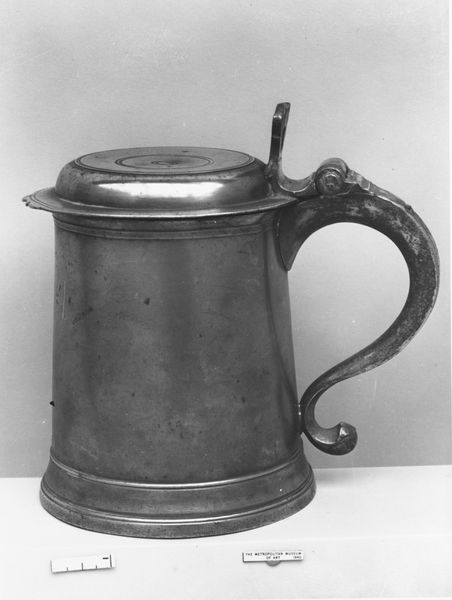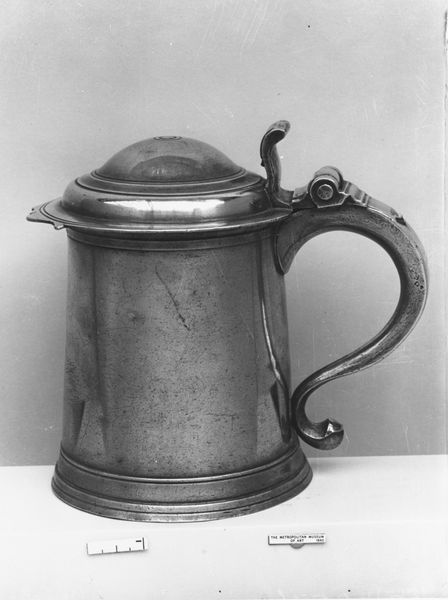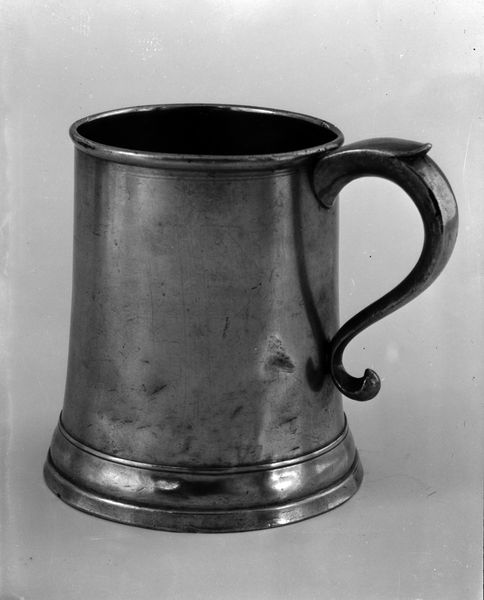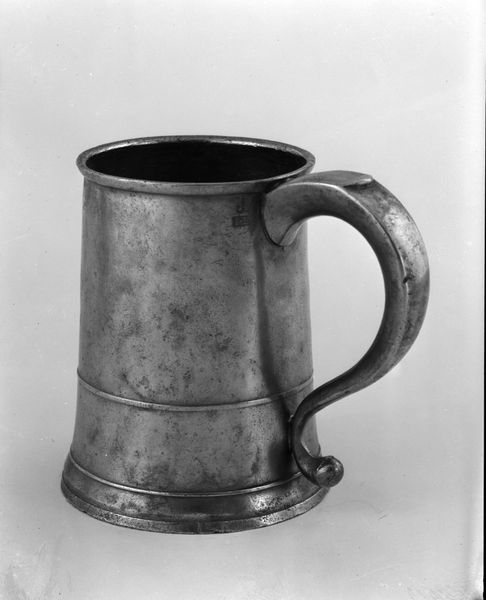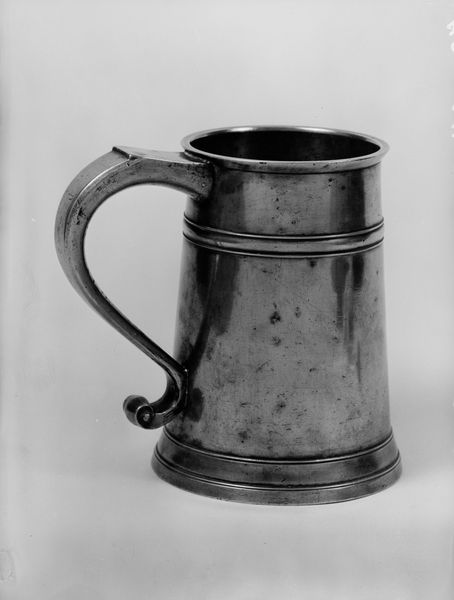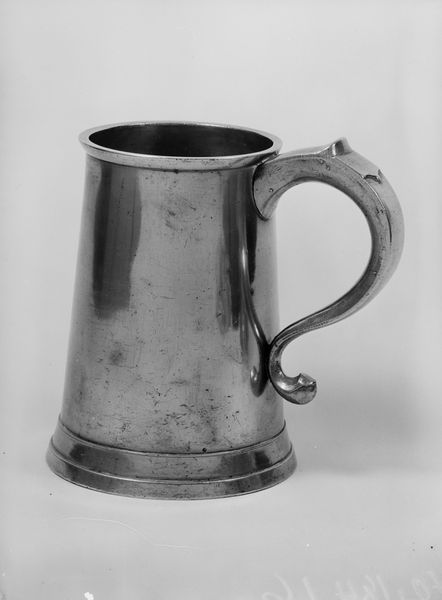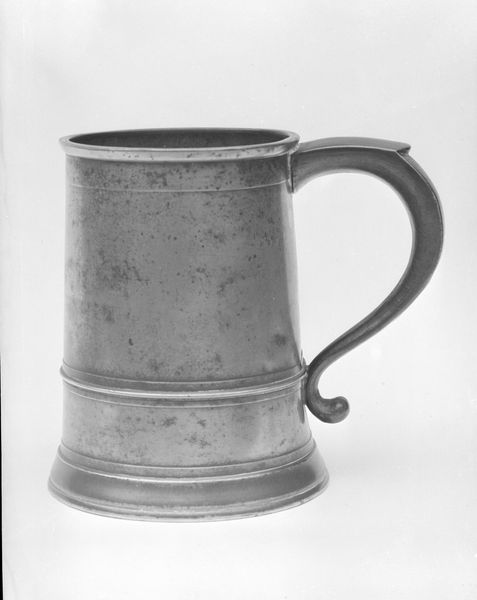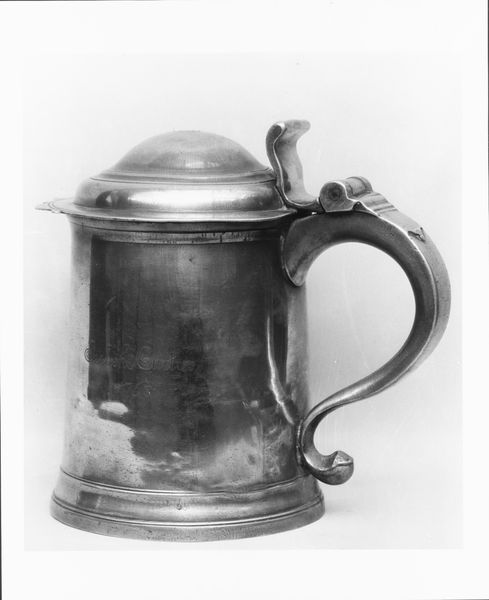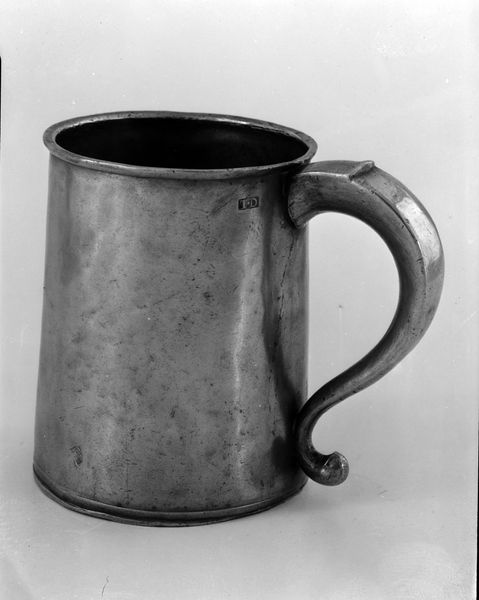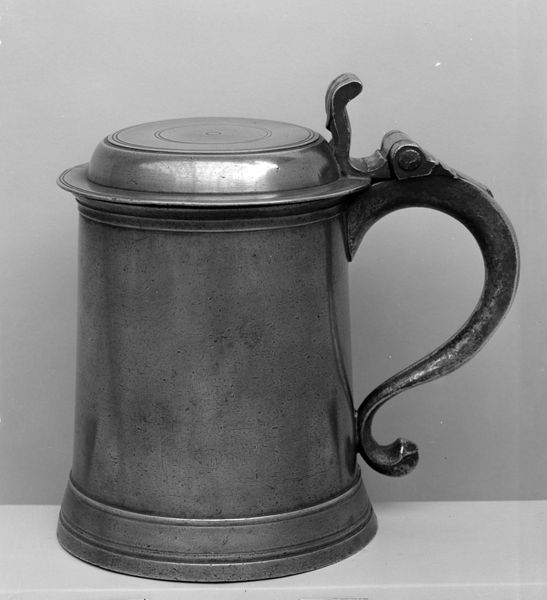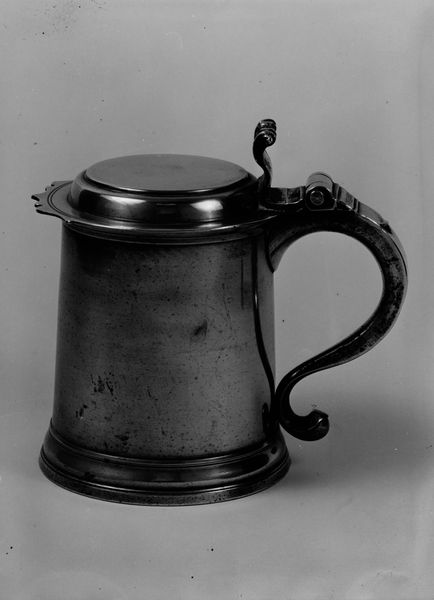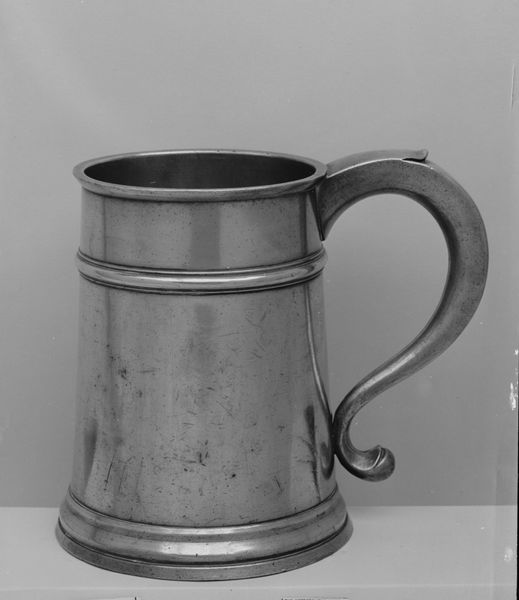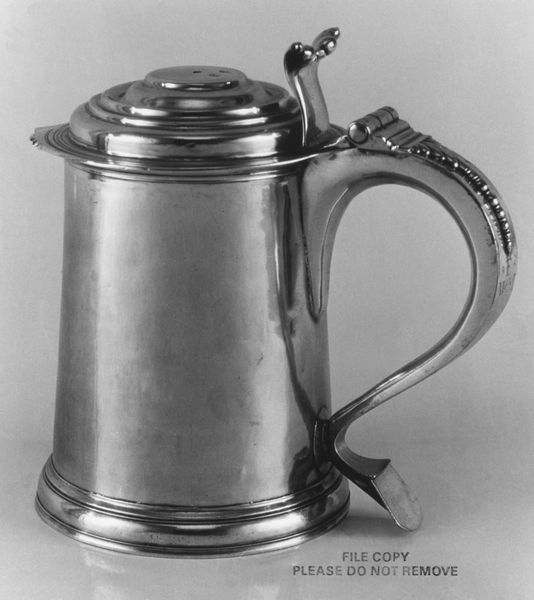
Dimensions: H. 6 7/8 in. H. (17.5 cm H.)
Copyright: Public Domain
Curator: What catches my eye immediately is how weighty and solid this object appears. There's a beautiful austerity in its form. Editor: Indeed. We're looking at a tankard, crafted somewhere between 1775 and 1795. You can currently find it at the Metropolitan Museum of Art. Curator: Its very functionality speaks volumes, doesn't it? Tankards of this period weren't just drinking vessels; they were statements of social standing, displayed prominently in homes. What stories could it tell of convivial gatherings? Editor: The formal elements also create a strong impression. Look at how the maker emphasizes volume. Notice how light glides across the metal. Its shape is basically cylindrical, yet softened with curved features in the handle. It adds this ornate touch that elevates the whole form. Curator: Exactly, it's an intriguing example of late Baroque aesthetics applied to something so practical. I'm curious about the artisans and workshops involved in its production. Were these mass-produced for a rising merchant class, or commissioned as individual pieces, reflecting specific patron tastes? Editor: The reflection begs attention, though. Its material presence transforms in the way it grabs light; each viewing angle reveals novel arrangements of contours and sheens. What sort of meanings do we infer through surface alone? Curator: Thinking about semiotics, the shiny exterior implies refinement. Someone drinking from this object, whether it's ale or cider, assumes certain notions about the person doing it. Class relations are literally embodied through everyday rituals such as that. Editor: Though the photograph obscures any potential coloration, what meanings and inferences would stem from the metallic choice on display, either of silver or pewter? Curator: It’s precisely this dialogue between function and ostentation that I find fascinating. The piece encapsulates larger socio-economic shifts underway at the time. Editor: Reflecting on its artistic shape and utilitarian value, this tankard represents both form and function in compelling balance. Curator: Absolutely. Objects such as these hold crucial cultural information and speak about shifts in our world. It’s not just art; it’s a document.
Comments
No comments
Be the first to comment and join the conversation on the ultimate creative platform.
